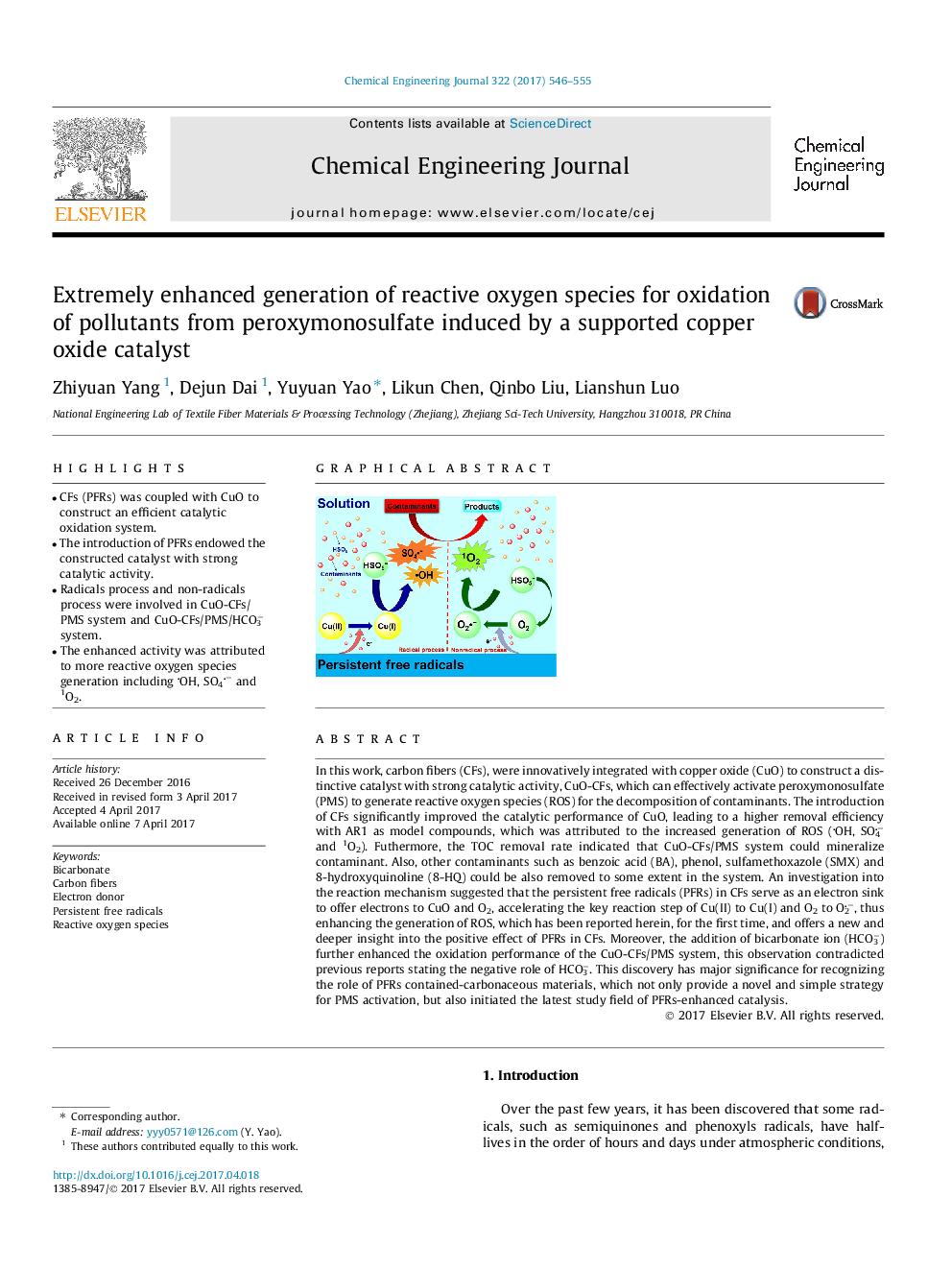| کد مقاله | کد نشریه | سال انتشار | مقاله انگلیسی | نسخه تمام متن |
|---|---|---|---|---|
| 6465662 | 1422956 | 2017 | 10 صفحه PDF | دانلود رایگان |
- CFs (PFRs) was coupled with CuO to construct an efficient catalytic oxidation system.
- The introduction of PFRs endowed the constructed catalyst with strong catalytic activity.
- Radicals process and non-radicals process were involved in CuO-CFs/PMS system and CuO-CFs/PMS/HCO3â system.
- The enhanced activity was attributed to more reactive oxygen species generation including OH, SO4â and 1O2.
In this work, carbon fibers (CFs), were innovatively integrated with copper oxide (CuO) to construct a distinctive catalyst with strong catalytic activity, CuO-CFs, which can effectively activate peroxymonosulfate (PMS) to generate reactive oxygen species (ROS) for the decomposition of contaminants. The introduction of CFs significantly improved the catalytic performance of CuO, leading to a higher removal efficiency with AR1 as model compounds, which was attributed to the increased generation of ROS (OH, SO4â and 1O2). Futhermore, the TOC removal rate indicated that CuO-CFs/PMS system could mineralize contaminant. Also, other contaminants such as benzoic acid (BA), phenol, sulfamethoxazole (SMX) and 8-hydroxyquinoline (8-HQ) could be also removed to some extent in the system. An investigation into the reaction mechanism suggested that the persistent free radicals (PFRs) in CFs serve as an electron sink to offer electrons to CuO and O2, accelerating the key reaction step of Cu(II) to Cu(I) and O2 to O2â, thus enhancing the generation of ROS, which has been reported herein, for the first time, and offers a new and deeper insight into the positive effect of PFRs in CFs. Moreover, the addition of bicarbonate ion (HCO3â) further enhanced the oxidation performance of the CuO-CFs/PMS system, this observation contradicted previous reports stating the negative role of HCO3â. This discovery has major significance for recognizing the role of PFRs contained-carbonaceous materials, which not only provide a novel and simple strategy for PMS activation, but also initiated the latest study field of PFRs-enhanced catalysis.
169
Journal: Chemical Engineering Journal - Volume 322, 15 August 2017, Pages 546-555
